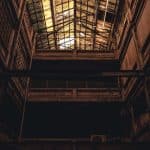The commercial real estate landscape is undergoing a major shift as hybrid work becomes the new norm. Businesses are no longer tied to the traditional 9-to-5 office model, and that change is transforming how commercial builders design, plan, and construct new spaces. In 2025, flexibility is no longer a feature—it’s a necessity.
The Shift to Hybrid: What Builders Need to Know
The rise of hybrid work has changed the way companies think about office space. Many organizations are downsizing square footage while prioritizing quality, collaboration, and adaptability. Builders are now faced with a challenge: how to create spaces that are both functional and flexible for a workforce that may only be in the office two to three days a week.
Instead of static floorplans and cubicle farms, modern commercial developments are trending toward open concepts, movable walls, modular workstations, and technology-enabled meeting rooms. Builders are incorporating design elements that allow companies to quickly reconfigure space based on daily or weekly team needs.
Modular Design and Moveable Infrastructure
One of the key trends driving this flexibility is modular construction. Builders are increasingly using prefabricated elements and movable partitions to create office layouts that can evolve over time. These components not only reduce build time but also allow tenants to scale up or down without a complete overhaul.
Raised floors, accessible ceilings, and plug-and-play electrical and HVAC systems are also becoming standard. These systems make it easier to adapt layouts without major reconstruction, offering long-term value to both developers and tenants.
Amenities That Support Hybrid Work
Builders are also rethinking amenities. In hybrid environments, the office is no longer just a place to work—it’s a place to connect, collaborate, and host clients. Builders are prioritizing the creation of communal spaces such as lounges, wellness rooms, podcast studios, and event spaces that support a wide range of professional activities.
Flexible meeting spaces with built-in video conferencing capabilities are also critical. Builders are partnering with tech companies to install smart systems that facilitate seamless communication between in-person and remote teams.
Sustainability and Wellness as Design Pillars
In addition to flexibility, tenants are looking for buildings that support health and sustainability. Builders are meeting this demand with natural lighting, better air filtration, and green certifications like WELL and LEED. These features are not only attractive to tenants but can also command higher lease rates and longer occupancy.
Looking Ahead
As the nature of work continues to evolve, commercial real estate builders must remain agile. The demand for flexibility will continue to shape not only how spaces are designed but also how they’re marketed, built, and operated.
For builders, the future lies in creating adaptable environments that serve both today’s hybrid teams and tomorrow’s innovations. Those who can offer thoughtful, scalable solutions will lead the next wave of commercial real estate development.





